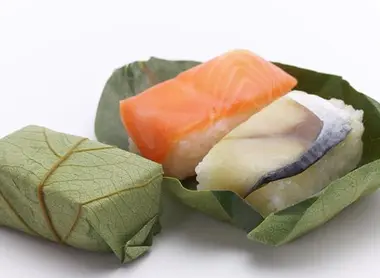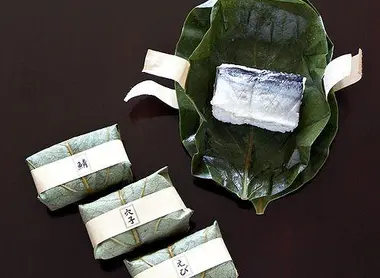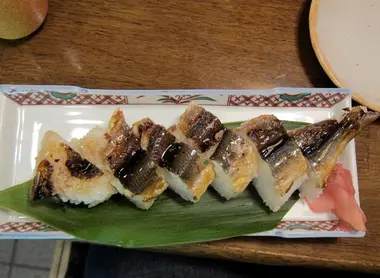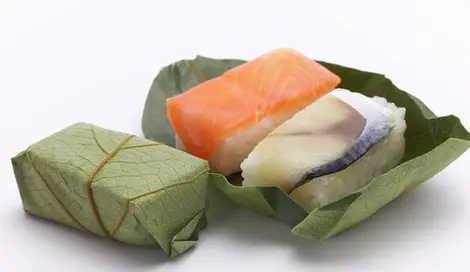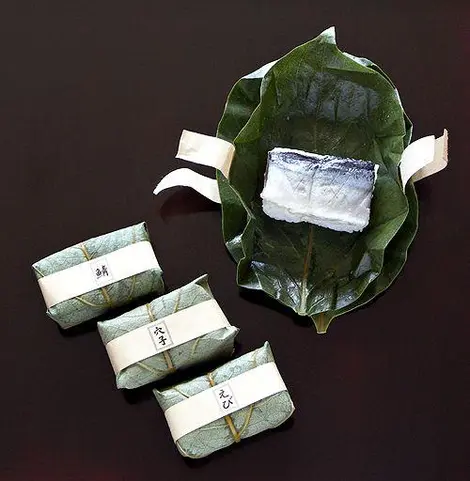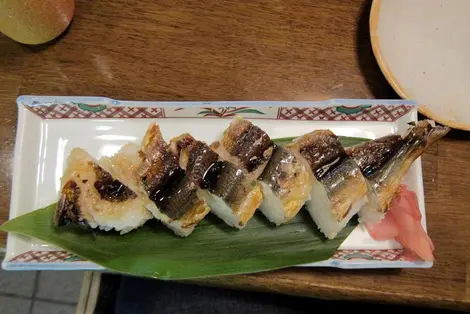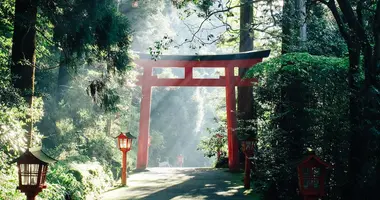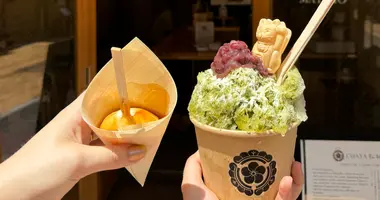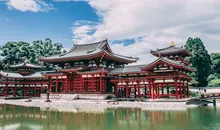Nara's kakinoha-zushi 奈良の柿の葉寿司
- Publicado el : 01/02/2018
- Por : A.R.
- Youtube
Des sushis pas comme les autres
Les biches ne sont pas la seule particularité culturelle de Nara, qui a bien plus à offrir que ces animaux kawaii. Relativement méconnu en dehors du Japon, les sushis de Nara sont pourtant une exception culinaire !
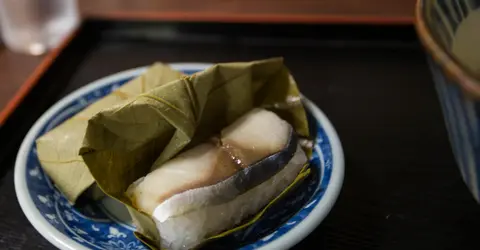
Kakinoha-zushi, sushi wrapped in a persimmon leaf
The kakinoha-zushi of Nara is a bit unusual. In fact, it's difficult at first to recognize them as sushi: their peculiarity is that they're camouflaged in a persimmon leaf. But why?
Hidden sushi
Nara is far from being a port city: deep in inland Kansai, seafood took a while to be transported there during the Edo era (1603-1868). This was reflected in the taste and quality of the fish - preserved in rice, salt and sometimes even vinegar, the fish arrived too salty and inedible. This is where the persimmon leaf comes in: it's used to wrap the sushi and maintain the taste. And in addition to its role of conservation, it also has anti-bacterial properties! Perfection in a leaf! It's not edible however, and is only intended to pack and protect the sushi. However, it infuses it with its slightly sweet aroma.
Read : Kansai culinary specialties
Khaki sushi
Thus, kakinoha-zushi , which literally means "sushi with persimmon leaf", is a marriage between the sea (the fish), the mountains (the persimmon leaf) and the land (the rice), which makes for an exceptional meal. Traditionally, kakinoha-zushi are made with salmon or mackerel but you can now also find shrimp or eel. They are delicately wrapped in a persimmon leaf, and presented in a wooden box. It's difficult for non-specialists to notice the difference in flavor compared with traditional sushi because it is particularly subtle. To put the odds on your side, opt for the mackerel (saba) kakinoha-zushi , a white fish that is more easily absorbed by the delicate aroma of persimmon leaf.
Read also : The job of sushi chef in Japan
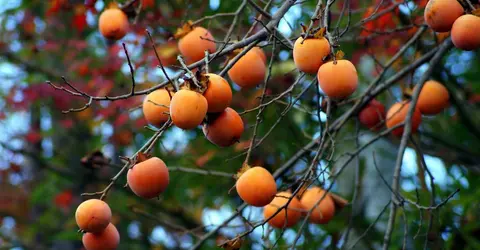
Japanese persimmons
